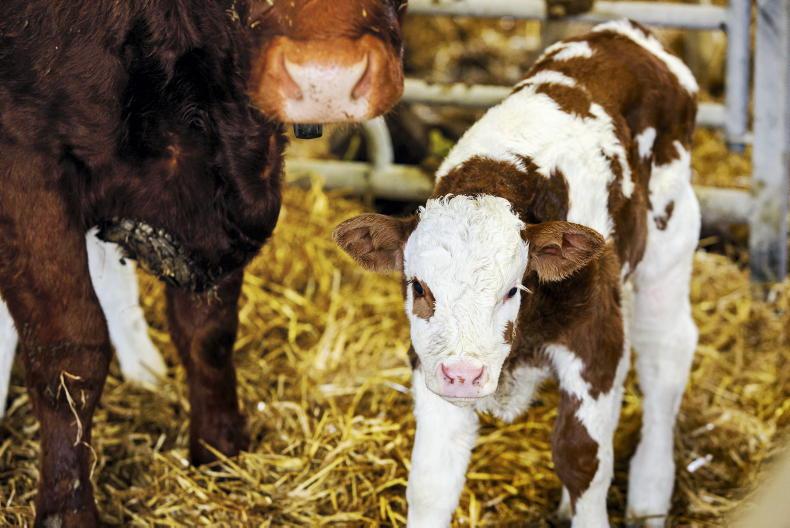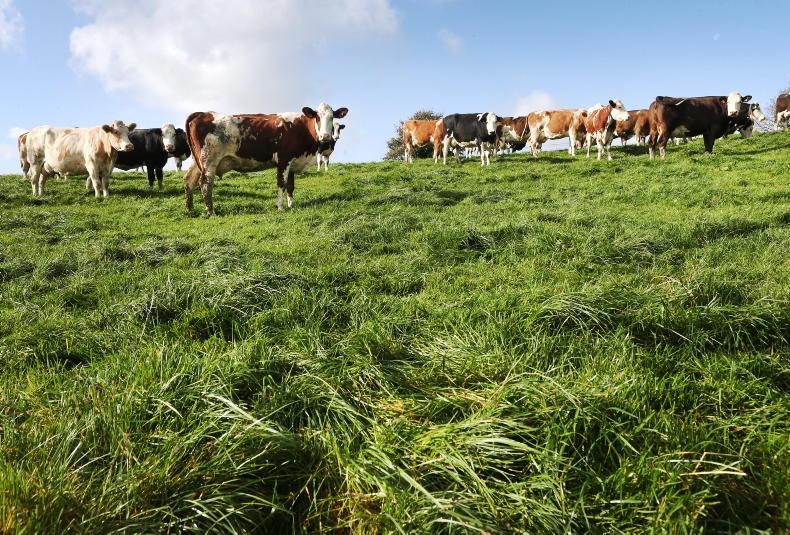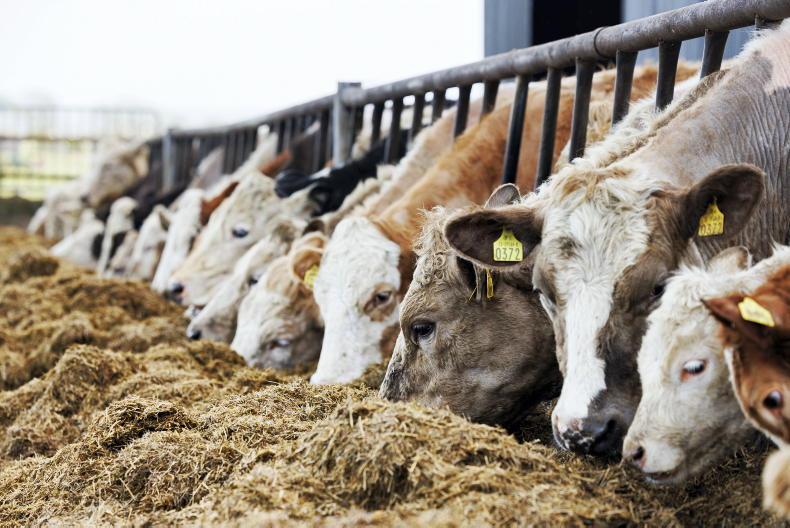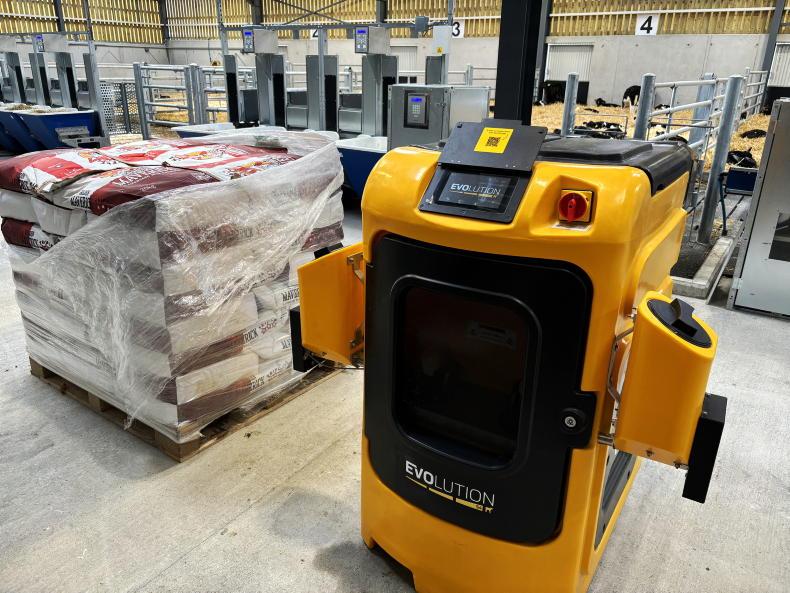Breeding will be getting under way on suckler farms now for farms where autumn-calving kicks off in August.
Regardless of whether cows are bred to AI or natural service, it is always a good idea to watch cows for signs of heat. Cows observed in heat, or mated, should be recorded.
Around 18 to 20 days after service, keep an eye on such animals for repeat breeding activity. If there is a high number of cows repeating, there may be a fertility issue with cows or the stock bull.
Getting semen tested will confirm if the bull is fertile and early action gives more options to prevent the calving pattern slipping.
Heat detection
Cows can have short or silent heats when housed on slats. Slippy floors can also limit mounting activity, so it is easy to miss animals.
Use a cheap aid like tail paint that can be easily applied to cows on a regular basis, making it easy to pick up breeding activity. High tech aids are also an option, but come at a cost.
The best times to watch cows is early morning and late evening. Spend at least 20 minutes during each monitoring period.
Don’t push in silage when you start watching cows. Let animals behave naturally. Therefore, time the daily feeding routine around when you want to watch cows.
Locking calves in the creep pen during the day, and overnight, can help cows to show stronger heats.
Calves should be allowed access to the cows for a couple of hours in the morning and night until cows are settled in-calf.
Read more
Five tips for effective fluke control this autumn
Watch: Tullamore heifers top out at €2,520
Breeding will be getting under way on suckler farms now for farms where autumn-calving kicks off in August.
Regardless of whether cows are bred to AI or natural service, it is always a good idea to watch cows for signs of heat. Cows observed in heat, or mated, should be recorded.
Around 18 to 20 days after service, keep an eye on such animals for repeat breeding activity. If there is a high number of cows repeating, there may be a fertility issue with cows or the stock bull.
Getting semen tested will confirm if the bull is fertile and early action gives more options to prevent the calving pattern slipping.
Heat detection
Cows can have short or silent heats when housed on slats. Slippy floors can also limit mounting activity, so it is easy to miss animals.
Use a cheap aid like tail paint that can be easily applied to cows on a regular basis, making it easy to pick up breeding activity. High tech aids are also an option, but come at a cost.
The best times to watch cows is early morning and late evening. Spend at least 20 minutes during each monitoring period.
Don’t push in silage when you start watching cows. Let animals behave naturally. Therefore, time the daily feeding routine around when you want to watch cows.
Locking calves in the creep pen during the day, and overnight, can help cows to show stronger heats.
Calves should be allowed access to the cows for a couple of hours in the morning and night until cows are settled in-calf.
Read more
Five tips for effective fluke control this autumn
Watch: Tullamore heifers top out at €2,520










SHARING OPTIONS